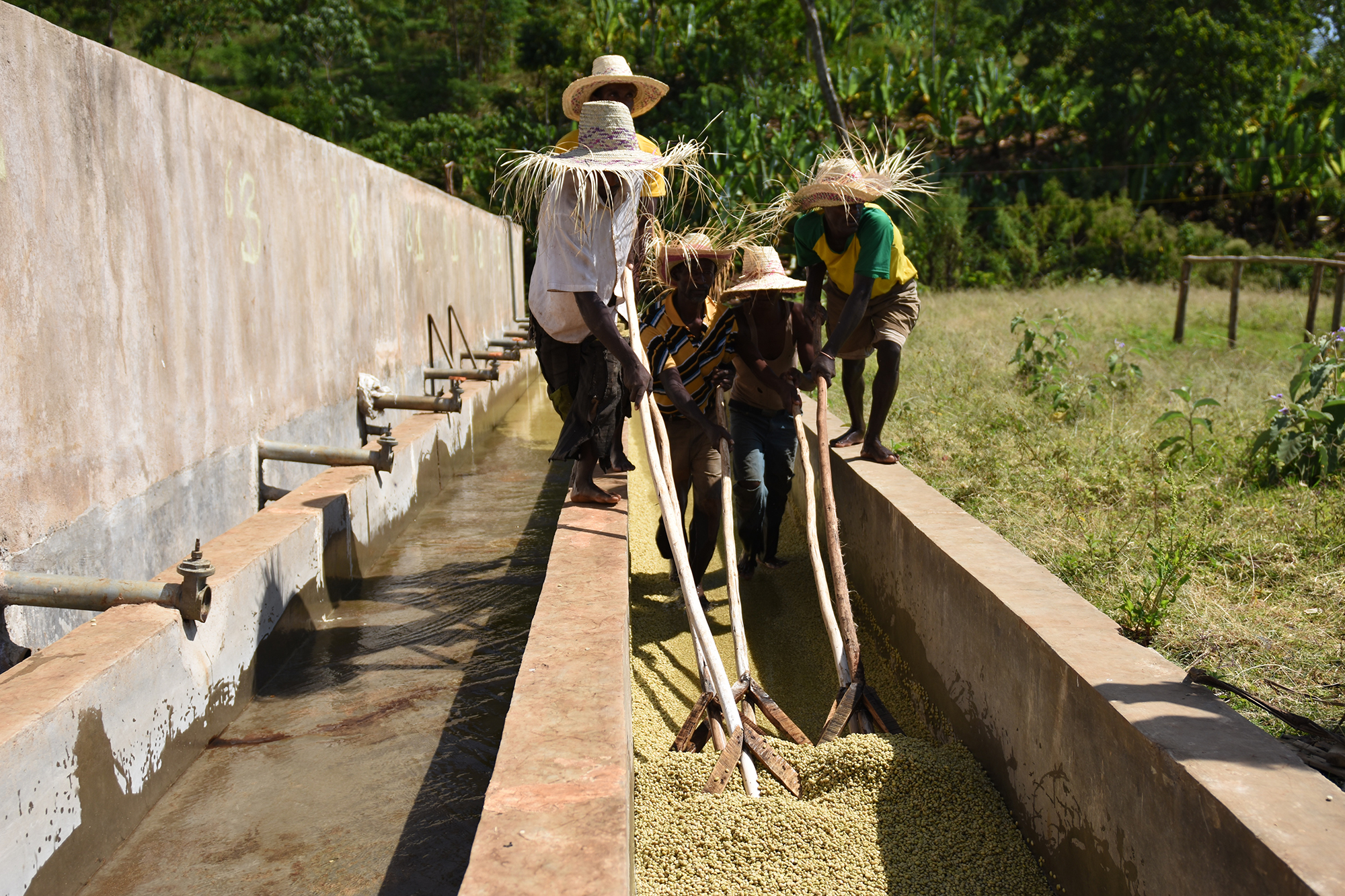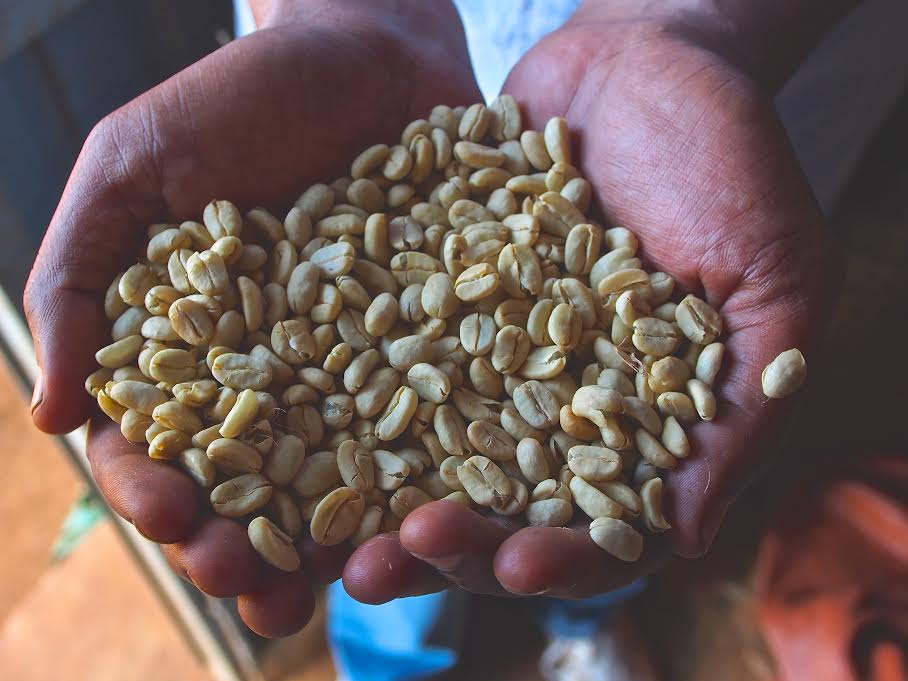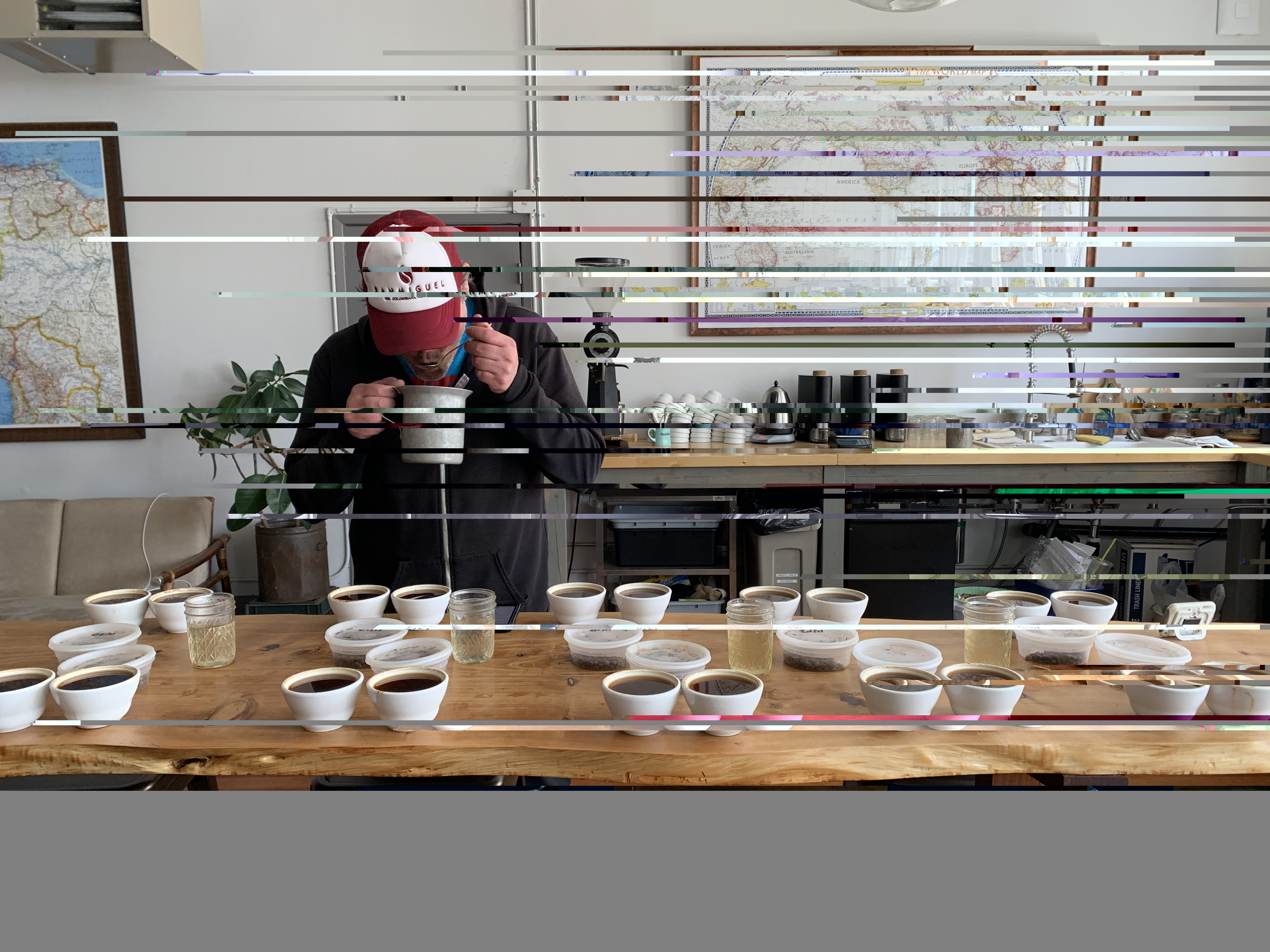Tasting coffee is the foundation of any high-quality coffee sourcing company, and you can’t taste coffee unless you roast it. Different companies take different approaches to sample roasting, but the key to any approach is being able to execute it consistently. It’s impossible to build accuracy and objectivity into your cupping process if you don’t start with the right roast, so our goal is to make sure that our roasting process is as repeatable as possible.
To ensure maximum consistency, we start with the right tool for us: Ikawa roasters, which run consistent roast profiles off a digital console with precise temperature controls. The dilemma that underpins this is whether or not one size fits all: can you learn the most about coffees by tasting them all on the same profile, or do custom profiles reveal the most about a coffee’s true nature?

For us, the answer is somewhere in between and relies on the water activity (aW) of a coffee, or the rate at which moisture moves in and out of the raw coffee seed. We believe that when tracked consistently over time, water activity readings can yield a ton of information—not just about a coffee’s shelf-life, but also about how it’ll behave when you, our customers, production-roast it. Since we have pretty tight ranges for water activity in coffees we buy, we have 3 custom profiles that we choose from based on a coffee’s water activity and moisture.
Across roasters, we’ve noticed that a higher water activity will crack harder, carry more momentum, and generally take less energy to get to its end temperature. On the other side of that, coffees with lower water activity can tend to exotherm less when compared to coffees with higher water activity when they crack and require more energy to develop properly and get out of the roaster. So, our 3 custom profiles compensate for that range, allowing us to get the same level of development out of each coffee with consistent, slight tweaks to profile.
With a lot of our sample roasting done at elevation, we also tweak profiles to compensate for that factor. Although Ikawa’s heating element is PID-controlled and will digitally attempt to follow the profile curve, we’ve noticed that if we use the exact same profiles at elevation, the coffees will overdevelop on the same line. To compensate, we increase the airflow during roasts and drop the final end temperature a little. Over time, we’ve gotten to a point of consistency where the roast is rarely a factor on the cupping table unless we want it to be.

These profiles aren’t and never will be set in stone. On the thankfully rare occasions where we feel like a sample roast is noticeable on the cupping table—meaning that the coffee might taste dark, light, overdeveloped, or underdeveloped, to the point of making it more difficult to assess the sample itself—we make a note to take a look at what factors might have influenced the roast and experiment with our process from there.
For instance, water activity and moisture are usually tied closely together, but in rare instances, they differ. One time, we noticed that a coffee tasted underdeveloped, and it turned out that while it had a slightly higher water activity within our narrow acceptable range, it had a very low moisture content, which had affected the roast. From there, we made sure to adjust our protocols to swap roast profiles based on moisture within a certain range rather than basing them on water activity alone. This is just one of many examples.

We do our best to represent the coffees that producers work hard to bring to our table and the onus is on us to guarantee that our assessments are based on the best data available. Our roasting process should never be a variable, and we work hard to make sure it isn’t. That helps us not only to bring in great coffee, but also to ensure that our producing partners get to showcase their work and put their best foot forward, even though they aren’t physically present while we’re tasting their coffee.
If you ever have any questions for us about the way your coffee is roasting, shoot us an email and we’ll be happy to share our thoughts. To see our Ikawa profiles, get in touch with your trader or hit us at info@redfoxcoffeemerchants.com.
To read a truly excellent primer by resident roastmaster Joel Edwards, click here.
